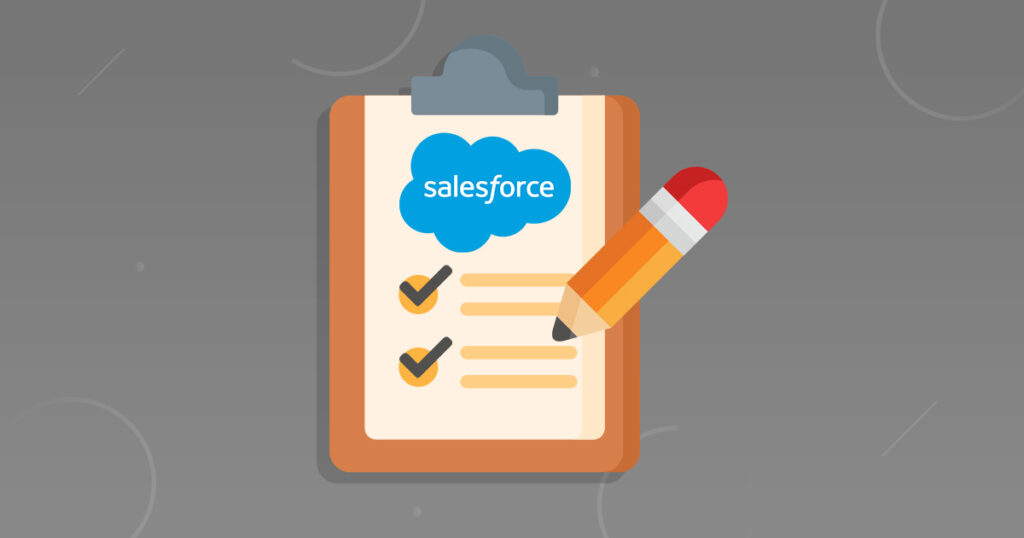Agile and Scrum have become business buzzwords in project management circles. However, as these methodologies evolve and age, some business leaders are asking: “Are Agile and Scrum still relevant?”
The answer is nuanced. While critics claim the methodologies have lost their edge, the truth is that Agile and Scrum are evolving and adapting. In fact, according to the 15th Annual State of Agile Report, 90% of organizations report using Agile in some form, highlighting its widespread influence across industries. For example, global giants like Spotify have credited their success in innovation and scalability to Agile frameworks, showcasing how these principles remain relevant in today’s fast-paced market.
At CRM Forge Solutions, we believe that the principles behind Agile are as valuable as ever, especially when integrated into Salesforce workflows. In this blog post, our team discusses how these project methodologies are evolving and what that could mean for your business.
Agile began as a bold experiment to improve software development. In 2001, the Agile Manifesto introduced core principles that emphasized collaboration, adaptability, and customer feedback.
Scrum, one of Agile’s most popular frameworks, brought structure to these principles by encouraging short development cycles, or sprints, to deliver incremental value.
This approach revolutionized project management. It replaced rigid processes with flexible ones that promoted pivoting when change was needed.
For Salesforce users, these principles align with the platform’s goal of providing customizable and responsive solutions.
Despite its widespread adoption, some critics argue that Agile has lost its innovative spark. In fact, many of the critics have described agile and scrum in terms of a cult-like religion. In fact, terms like “Agile fatigue” describe the disillusionment that arises when organizations misapply the methodology or treat it as a rigid rulebook rather than a set of guiding principles.
Agile’s mainstream success has also led to over-standardization. Ironically, the very flexibility that made Agile revolutionary can be stifled by prescriptive practices. For example, teams might adhere to Scrum “ceremonies” without adapting them to their unique challenges, resulting in inefficiencies rather than improvements.
However, these criticisms don’t signal the death of Agile. Instead, they highlight the need for its evolution.
At CRM Forge Solutions, we see Agile’s adaptability as its greatest strength. By tailoring Agile practices to specific Salesforce implementations, organizations can overcome these challenges and regain the methodology’s transformative benefits and lose the cult-like ceremonies that have been holding it back.
Salesforce is inherently dynamic because it grows and evolves with the organizations. Integrating Agile principles into Salesforce workflows allows teams to:
Prioritize Customer Needs
Agile encourages teams to work in short, focused sprints, delivering incremental value to customers. This approach ensures that Salesforce implementations remain aligned with evolving customer demands and market conditions.
Foster Collaboration Between Sales, Marketing, and IT Teams
Agile breaks down silos and promotes cross-functional teamwork. By leveraging Agile within Salesforce, organizations can improve communication and streamline processes between departments.
Improve Processes Using Real-Time Data Insights
Salesforce provides robust data analytics. When combined with Agile principles, it helps teams refine their workflows and strategies.
For example, a healthcare organization might use Agile to refine its Salesforce Health Cloud implementation. By conducting short sprints focused on patient feedback, the team can incrementally improve user interfaces and data management processes.
CRM Forge Solutions specializes in helping organizations align their Agile practices with Salesforce’s capabilities.
Agile’s success depends on thoughtful implementation. Over the years, CRM Forge Solutions has seen these three pitfalls:
1. Over-Complicating the Methodology
Adding unnecessary layers of complexity can hinder progress. Agile is designed to simplify processes and encourage adaptability, but when organizations over-engineer workflows or introduce too many tools, they can overwhelm their teams. This not only slows down progress but also detracts from Agile’s core purpose of fostering agility and responsiveness.
2. One-Size-Fits-All Approaches
Agile must be tailored to each organization’s unique needs and Salesforce configuration. That’s why a generic framework leads to inefficiencies and missed opportunities for optimization. For example, a nonprofit using Salesforce for donor management may require different sprint goals and workflows than a financial services company using it for client onboarding.
3. Neglecting Stakeholder Buy-In
Without commitment from leadership and end users, Agile practices won’t gain traction. Stakeholders must not only understand the value of Agile but also actively participate in its processes. Resistance or disengagement from key players can lead to incomplete implementations and missed opportunities for growth.
CRM Forge Solutions addresses these challenges by customizing Agile frameworks to fit organizational goals.
Agile means there’s always room for refinement and improvement. This mindset is especially valuable in Salesforce ecosystems, where new features and integrations constantly emerge.
At CRM Forge Solutions, we guide organizations through Agile evolution through Salesforce. Whether it’s optimizing workflows, integrating new tools, or training teams in Agile best practices.
Agile and Scrum aren’t going anywhere because their core principles — flexibility, collaboration, and customer-centricity — address universal business needs. In the context of Salesforce, these methodologies drive:
Faster Implementation and Adaptation of New Features
Agile’s iterative approach allows teams to break down complex Salesforce projects into manageable tasks. For example, instead of waiting months for a full implementation, teams can deploy updates incrementally while gathering feedback along the way.
Improved Cross-Departmental Communication
One of Agile’s greatest strengths is fostering collaboration across teams. In Salesforce, this means aligning sales, marketing, and IT departments. By breaking down silos, teams can share insights, resolve bottlenecks, and keep stakeholders working toward common goals.
Higher ROI Through Streamlined Processes and Better User Experiences
Agile encourages continuous improvement within Salesforce implementations. Streamlining processes eliminates inefficiencies, while iterative updates allow for constant refinement of the user experience. As a result, organizations see higher returns on their Salesforce investment, with improved productivity, customer satisfaction, and overall business performance.
The question isn’t whether Agile and Scrum are dead. Instead, it’s how they can evolve to meet modern challenges. At CRM Forge Solutions, we combine our expertise in Salesforce with Agile’s enduring principles to help organizations achieve their goals.
Contact CRM Forge Solutions today to explore how our experts can transform your workflows for maximum efficiency and collaboration.









